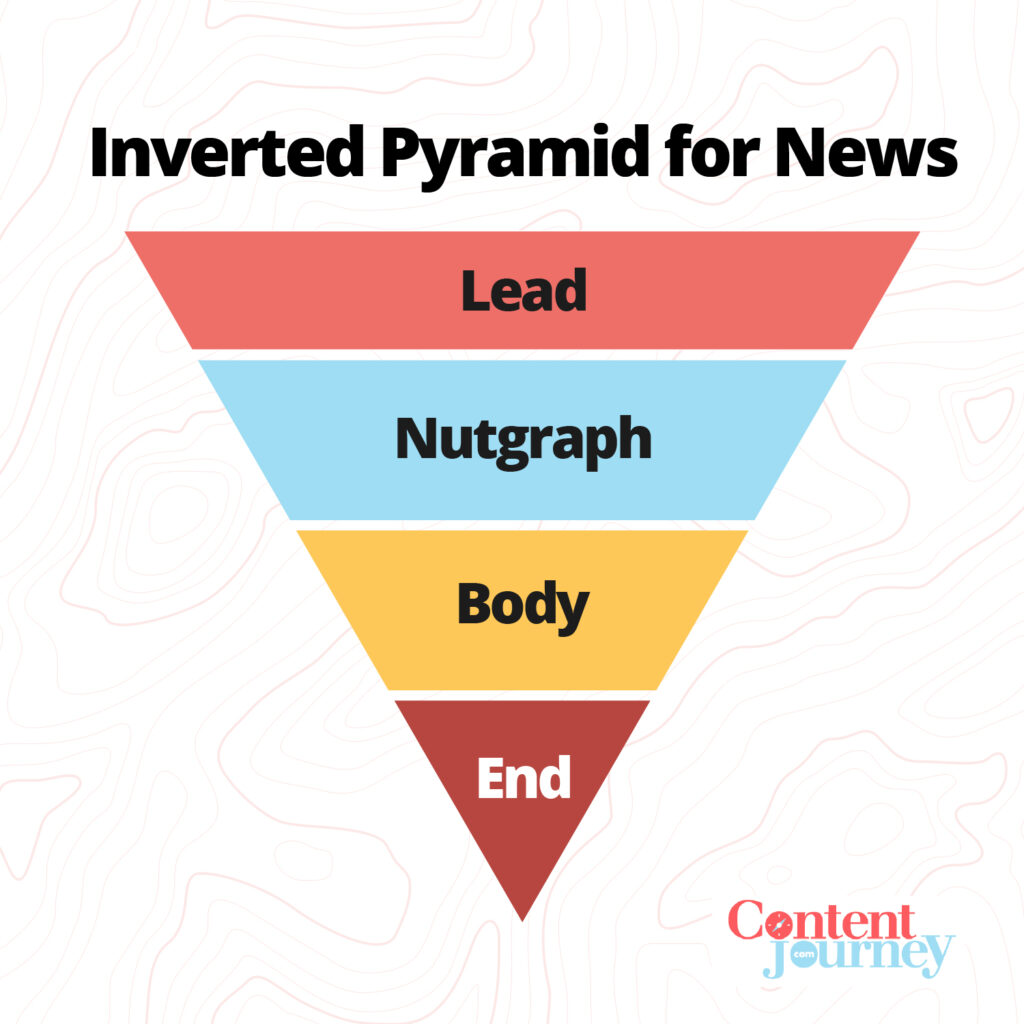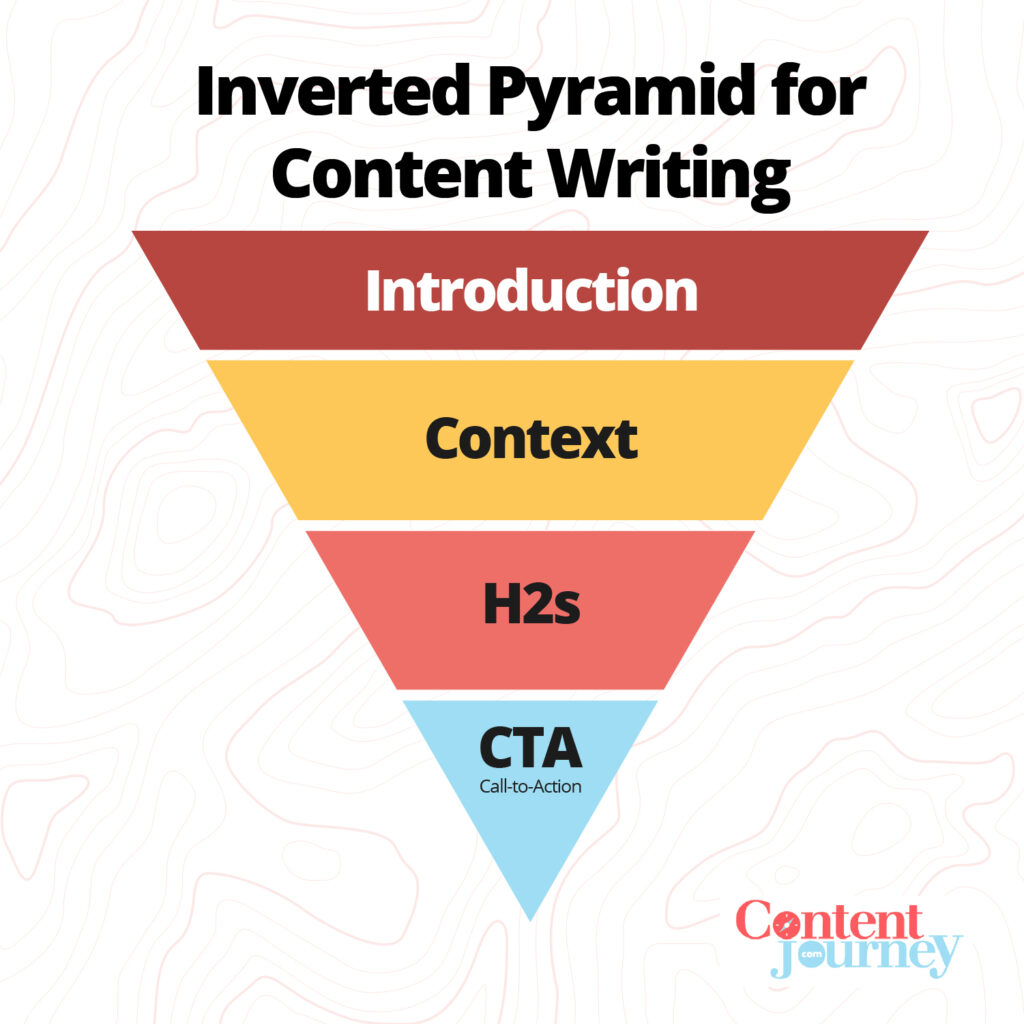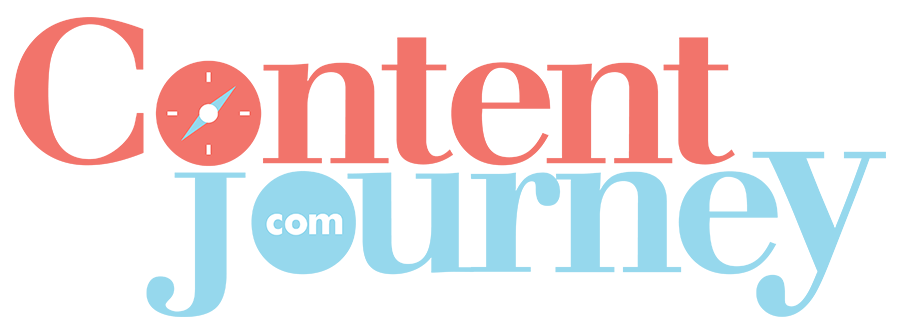The Format for Writing a Blog Post
A lot of content marketers bash using formulas for writing. They say formulas make writing dull, limit creativity, and make all blog posts read the same. They’re wrong. All writing — creative, content, journalism, research, you name it — starts with a formula. This post explains the format for writing a blog post.
The Formula for Journalistic Writing
Most of Content Journey’s writing team worked in journalism at one point or another. So, it makes sense that, to prove our point about the power and effectiveness of formulaic writing, we draw from journalism’s formula — the inverted pyramid.
The inverted pyramid presents information from most important to least important. It allows readers to get the gist of the news as soon as they start reading. But good writing in the inverted pyramid format draws the reader in and makes them want to keep reading. All journalistic writing uses a version of the inverted pyramid. It helps readers feel comfortable with a standardized structure among all news outlets and allows editors to trim content from the bottom, if necessary.

The journalistic inverted pyramid has four parts:
- Lead. The lead tells the reader what the story is about. It’s the most up-to-date information in a sentence or two.
- Nutgraph. The nutgraph supports the lead with additional information. It puts the lead in context. Together the lead and nutgraph answer the who, what, when, and where. The best quote that builds on the story’s subject generally follows the nutgraph.
- Body. The body is the meat of the story. It’s where the writer answers the how and why. It’s also where writers introduce sources and their views. In other words, it’s where the quotes go. I like to put the first and best quote right after the nutgraph. That way, you get the reader’s attention, give them a bit of context, then provide a real zinger in someone else’s words that supports why the issue is important.
- End. In news, the ending just happens. The writer doesn’t summarize or tie a pretty bow around the story. When they’ve told the story, they stop writing. Or, as I like to say, “Write until you’re done.” Other types of journalism, like feature writing, may revisit the lead or end the story with a quote.
The guaranteed structure of a news story means that journalists can write them quickly and get the people the information they seek or, more importantly, need to know. It also comforts the reader to have information presented across publications in the same format. They know what to expect.
Using the Inverted Pyramid Format for Writing a Blog Post
Content marketing isn’t journalism. While journalism aims to provide people with the information they need to participate in democracy, content marketing promotes businesses. They serve different functions, but you can use many journalistic principles to strengthen any writing, including content writing.
Journalism’s inverted pyramid applies to writing blog posts. All you have to do is alter it a bit.

The inverted pyramid for content writing also has four parts:
- Introduction. The introduction is essentially the lead. It tells the reader what the piece is about while drawing them in and making them want to keep reading. Writing catchy intros is a vital skill for all writers. A key difference in content writing is that the intro also includes the content’s SEO keywords. People spend an average of 37 seconds reading a blog post. You’d better keep them intrigued right from the beginning.
- Context. The context in content writing is a lot like the nutgraph in journalism. It puts the introduction into context. It’s an excellent spot to provide a quote, statistic, or definition that reflects the issue’s importance. Context supports the reader’s decision to read the post by clarifying what’s in it for them.
- H2s. These secondary headers act as the body of a content piece. They build on the post’s title and explain the post’s content. A reader could read only the title and H2s and generally understand the post. And, based on the stat above, some readers do this.
- Call-to-Action. While journalistic news stories just end, the ending of a content piece is critical to its purpose. The CTA is where you tell the reader what you want them to do next. But you use CTA writing best practices to phrase it so that they understand why this is the logical next step for them. It’s where you encourage them to engage with your client and generally what the piece worked toward.
Other Writing Style Similarities
We promise that applying the inverted pyramid to your content won’t make it boring or trite. Only bad writing does that. And the inverted pyramid isn’t the only principle content marketing borrows from journalism.
Content marketing also uses other journalistic writing approaches, including:
- Interviews
- Short paragraphs (even one sentence is enough)
- Active voice
- Bullet points
- Subheads
- Associated Press Style
- Visuals like graphics and photos
Journalistic writing provides clarity on complex issues. Why wouldn’t content marketing borrow as many rules from journalism as possible when you think about it that way? Also, journalists and content writers have to write a lot, so having a format for writing blog posts and applying the most efficient and effective writing methods to both makes sense.
Still Don’t Want to Write?
You can use one of these writing formulas and quickly create compelling, accurate content — like journalists do. But we also understand that just because we can do it doesn’t mean you can or want to. Some people don’t enjoy writing. Others don’t write for their jobs and don’t have time to fit it into their daily to-do list. Whatever your reasoning, we’re here to help. If you recognize the importance of content marketing for your business but don’t want to write yourself, book a call. We’d love the opportunity to help you along your content journey.







